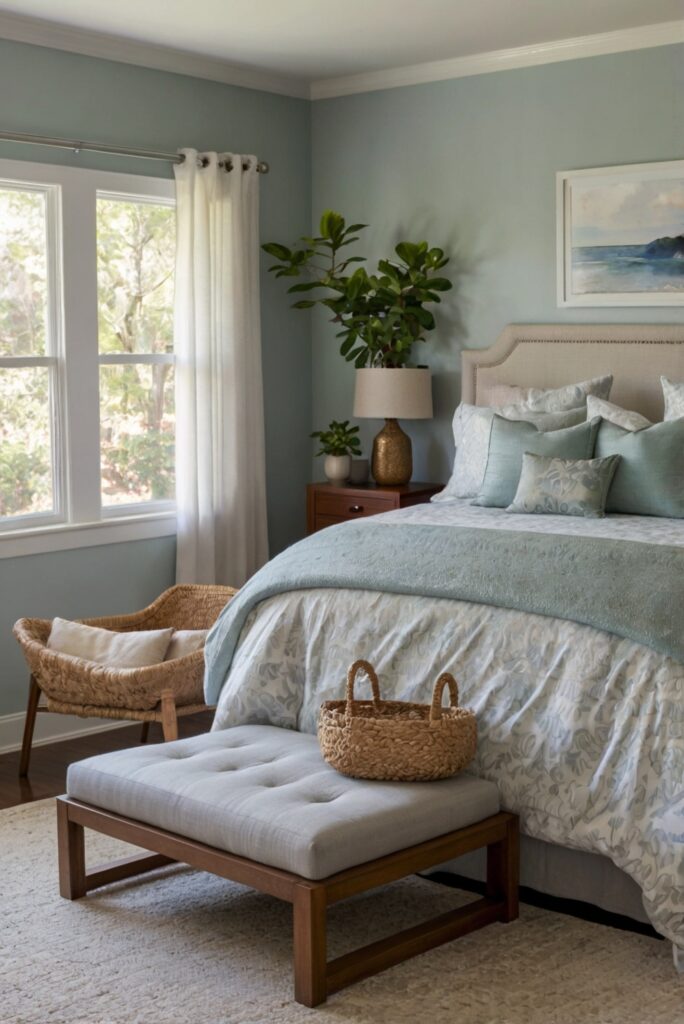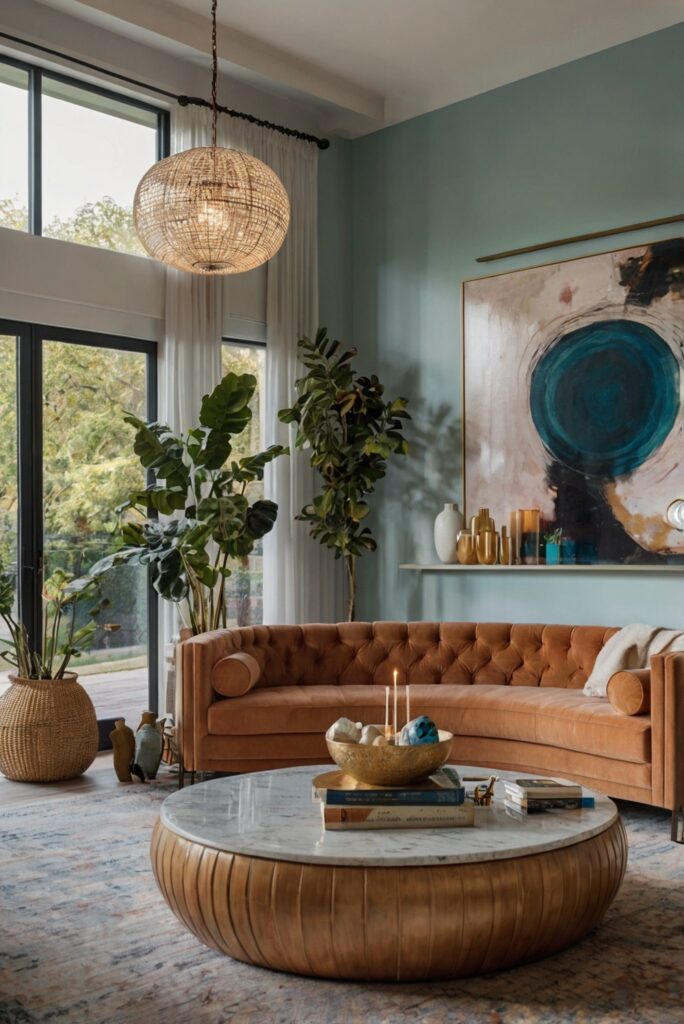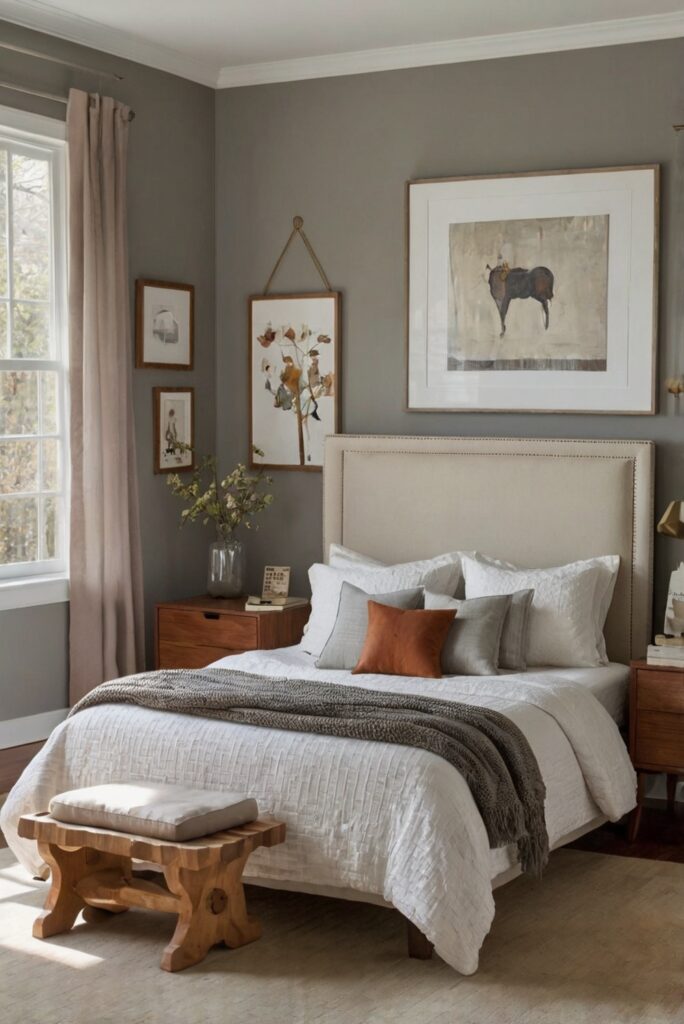Explore the tranquil beauty of Japanese Zen bedrooms with the best paint colors. Discover daily routines for interior designers to create a serene retreat.
For creating a serene Japanese Zen bedroom, the best paint colors to use are neutral earth tones such as soft greens, muted blues, warm beiges, and light grays. These colors help evoke a sense of peace and tranquility, which is essential for a Zen-inspired space. To further enhance the calming atmosphere, consider adding elements like natural wood furniture, paper lanterns, and bamboo accents. It’s important to keep the room clutter-free and well-organized to maintain a sense of serenity. Additionally, incorporating elements of nature such as indoor plants or water features can help create a harmonious and balanced space.
When selecting paint colors for a Japanese Zen bedroom, it’s advisable to consider the principles of Feng Shui to optimize the energy flow in the room. This can involve positioning furniture, choosing colors, and incorporating elements that promote a sense of calm and relaxation. Another important aspect is lighting – natural light is preferable, but if that’s not possible, opt for soft, warm lighting that mimics natural light. Overall, creating a serene Japanese Zen bedroom involves careful consideration of colors, textures, and elements to achieve a harmonious and peaceful space.
Best Paint Colors for Creating a Serene Japanese Zen Bedroom
In creating a serene Japanese Zen bedroom, the choice of paint colors plays a vital role in setting the right mood and ambiance. Here are some of the best paint colors that you can consider:
Natural Earthy Tones:
Opt for natural earthy tones such as beige, taupe, and soft grey. These colors evoke a sense of calmness and tranquility, which are essential in a Zen-inspired space. They also create a harmonious connection with nature, which is a key element in Japanese design.
Soft Greens and Blues:
Soft greens and blues are also excellent choices for a Zen bedroom. These colors are soothing to the eyes and help create a peaceful atmosphere. Green symbolizes nature and growth, while blue represents tranquility and serenity.
White:
White is a classic choice for a Japanese Zen bedroom. It symbolizes purity, simplicity, and cleanliness. White walls can make the space feel airy and spacious, reflecting the minimalistic aesthetic of Japanese design.
Lighting Considerations:
When choosing paint colors for a Japanese Zen bedroom, consider the lighting in the room. Natural light is ideal, so opt for colors that will enhance the brightness of the space. Soft, muted colors work best in rooms with ample natural light.
Furniture and Decor:
When selecting paint colors, keep in mind the furniture and decor in the room. Choose colors that complement the wood tones of Japanese-style furniture, such as light or dark woods. Consider incorporating natural materials like bamboo and rice paper to enhance the Zen aesthetic.
In conclusion, when creating a serene Japanese Zen bedroom, the choice of paint colors is crucial in setting the right tone and mood. Natural earthy tones, soft greens and blues, and white are some of the best options to consider. Remember to take into account the lighting in the room and how the colors will interact with the furniture and decor. By selecting the right paint colors, you can transform your bedroom into a peaceful retreat inspired by Japanese design principles.
1. What are the best paint colors for creating a serene Japanese Zen bedroom?
To create a tranquil Japanese Zen bedroom, opt for calming colors like soft neutrals such as beige, ivory, and pale gray. These colors evoke a sense of simplicity and serenity, which are key elements of Japanese design. Additionally, muted shades of blue and green inspired by nature can also help create a peaceful atmosphere. Avoid bright, bold colors and opt for a minimalist color palette to achieve a Zen-like ambiance in your bedroom.
2. How can paint colors influence the mood of a Japanese Zen bedroom?
Paint colors play a crucial role in setting the mood and ambiance of a Japanese Zen bedroom. Soft, neutral colors like beige and ivory promote a sense of tranquility and relaxation, while muted blues and greens evoke a connection to nature. These colors help create a harmonious and peaceful environment that is essential for a Zen-inspired space. By choosing the right paint colors, you can transform your bedroom into a serene retreat that promotes mindfulness and relaxation.
3. Are there specific color combinations that work best for a Japanese Zen bedroom?
When selecting paint colors for a Japanese Zen bedroom, it’s essential to focus on creating a harmonious and balanced color palette. Consider combining soft neutrals like beige and ivory with muted shades of blue or green to evoke a sense of calmness and tranquility. Avoid using contrasting colors or busy patterns, as they can disrupt the peaceful atmosphere of a Zen-inspired space. Stick to a simple and minimalist color scheme to create a serene and relaxing environment that promotes mindfulness and inner peace.
4. How can lighting complement the paint colors in a Japanese Zen bedroom?
In a Japanese Zen bedroom, lighting plays a crucial role in enhancing the ambiance created by the paint colors. Soft, diffused lighting can help create a warm and inviting atmosphere that complements the serene color palette. Consider using paper lanterns, floor lamps, or wall sconces to create a soft, ambient glow that mimics natural light. Avoid harsh overhead lighting and opt for gentle, indirect lighting sources to create a tranquil and relaxing environment. By combining the right lighting with the appropriate paint colors, you can achieve a harmonious and peaceful Japanese Zen bedroom.
5. What other design elements can enhance the serene atmosphere of a Japanese Zen bedroom?
In addition to the right paint colors, several design elements can enhance the serene atmosphere of a Japanese Zen bedroom. Consider incorporating natural materials like wood, bamboo, and stone to create a sense of harmony with nature. Minimalist furniture, clean lines, and uncluttered spaces can also contribute to a tranquil and calming environment. Add elements of nature such as indoor plants, water features, or natural textures to bring a sense of balance and tranquility to the room. By combining these design elements with the right paint colors, you can create a serene Japanese Zen bedroom that promotes relaxation and mindfulness.



